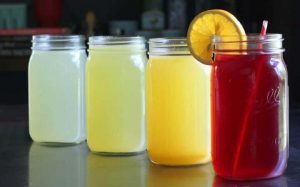
It’s July!! So everyone knows what that means?! It’s hot, super hot, outside. Everyone needs to be safe while outdoors. It is important to wear your sunscreen and stay hydrated.
Heat stroke is the most serious form of heat injury and is considered a medical emergency. If you suspect that someone has heat stroke — also known as sunstroke — call 911 immediately and give first aid until paramedics arrive.
Heat stroke can kill or cause damage to the brain and other internal organs. Although heat stroke mainly affects people over age 50, it also takes a toll on healthy young athletes.
Heat stroke often occurs as a progression from milder heat-related illnesses such as heat cramps, heat syncope (fainting), and heat exhaustion. But it can strike even if you have no previous signs of heat injury.
Symptoms may include:
- Throbbing headache
- Dizziness and light-headedness
- Lack of sweating despite the heat
- Red, hot, and dry skin
- Muscle weakness or cramps
- Nausea and vomiting
- Rapid heartbeat, which may be either strong or weak
- Rapid, shallow breathing
- Behavioral changes such as confusion, disorientation, or staggering
- Seizures
- Unconsciousness
If you suspect that someone has a heat stroke, immediately call 911 or transport the person to a hospital. Any delay seeking medical help can be fatal.
While waiting for the paramedics to arrive, initiate first aid. Move the person to an air-conditioned environment — or at least a cool, shady area — and remove any unnecessary clothing.
If possible, take the person’s core body temperature and initiate first aid to cool it to 101 to 102 degrees Fahrenheit. (If no thermometers are available, don’t hesitate to initiate first aid.)
Try these cooling strategies:
- Fan air over the patient while wetting his or her skin with water from a sponge or garden hose.
- Apply ice packs to the patient’s armpits, groin, neck, and back. Because these areas are rich with blood vessels close to the skin, cooling them may reduce body temperature.
- Immerse the patient in a shower or tub of cool water.
- If the person is young and healthy and suffered heat stroke while exercising vigorously — what’s known as exertional heat stroke — you can use an ice bath to help cool the body.
Do not use ice for older patients, young children, patients with chronic illness, or anyone whose heat stroke occurred without vigorous exercise. Doing so can be dangerous.
If emergency response is delayed, call the hospital emergency room for additional instructions.

- 1/2 cup fresh orange juice
- 1/4 cup fresh lemon juice
- 2 cups water (filtered or purified or raw coconut water)
- 2 tbsp organic raw honey or organic maple syrup
- 1/8 tsp Himalayan Pink salt
-
Put all ingredients in a blender and blend well.
-
Store in Mason jars or reusable glass cap bottle
Prep Time:5 mins Total Time:5 mins
